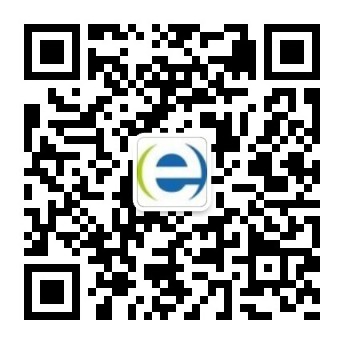2014年湖南师范大学考博英语真题
- 1
- 2
- 5
摘要:希赛网英语考试频道为大家分享“2014年湖南师范大学考博英语真题”,更多考博英语相关信息,请关注希赛网英语考试频道。
“2014年湖南师范大学考博英语真题”小编正在努力更新中,请关注希赛网英语考试频道,以下为考博英语预测题库精选试题。
Part II. Reading comprehension (20x2=40%)
Directions: There are four passages in this part. After each passage, there are five questions. You are to choose the best answer for each question. Write your answers on the answer sheet.
Passage one
Disease is a fluid concept influenced by societal and cultural attitudes that change diachronically in response to new scientific and medical discoveries. Historically, doctors defined a disease according to a cluster of symptoms, and as their clinical descriptions became more sophisticated, they started to classify diseases into separate groups, so that from this medical taxonomy came new insights into disease etiology. Before the 20th century, schizophrenia and syphilitic insanity were treated as the same disease, but by early 1900 it became evident that psychoses without associated dementia represented a separate disease for which the term schizophrenia was then coined. The definition of schizophrenia continues to evolve from the psychiatric disease of the 1960s to an illness with a suspected genetic etiology, though the existence of such an etiology remains uncertain. While an optimistic hunt is still on for the genes involved, we must continue to define schizophrenia in terms of the presence or absence of “positive” and “negative” symptoms.
Labeling someone as diseased, however, has enormous individual, social, financial, and physical implications, for irrespective of disease symptoms, the label itself may lead to significant distress. Individuals with asymptomatic conditions, including genetic variations, may be perceived by themselves or others as having a disease. It is not that labeling someone as diseased is always positive-------it does have severe ramifications, affecting decisions to have children or resulting in unjust treatment by life, medical, and disability insurers-------but it can be beneficial, legitimizing symptoms, clarifying issues of personal responsibility, and improving accessibility to health care. Nevertheless, deviations from normal that are not associated with risk should not be considered synonymous with disease. Two schools---------nominalist and essentialist or reductionist----------have debated the clinical criteria used to label a patient as diseased. Nominalists label symptoms with a disease name, such as schizophrenia, and do not offer an explanation of the underlying etiology, while essentialists contend that for every disease there is an underlying pathological etiology, and now argue that the essential lesion defining the disease state is a genetic abnormality.
It has been suggested that diseases defined according to the essentialist tradition may be precisely wrong, whereas those defined in the nominalist traditional may be roughly accurate. But in labeling a disease state, we must consider both the phenotype (symptoms) or the genotype (genetic abnormality), for adverse consequences, while the latter helps suggest specific genetic or pharmacologic therapies. Thus, both clinical criteria and genetic abnormalities should be used to define a disease state, and the choice of a disease definition will vary according to what one wishes to achieve, the genetic counseling of family members or the effective treatment of the patient.
21. The author of the passage is primarily concerned with
A) proposing a return to a traditional taxonomical system
B) describing an way to resolve a taxonomical dilemma
C) assessing the success of a new taxonomical method
D) predicting a change in future taxonomy
22. It can be inferred that the author considers the way schizophrenia has been classified by doctors after 1960 to be an example of which of the following?
A) A disease which resisted traditional methods of classification, but has been served well by modern methods of classification
B) A disease which has resisted modern methods of classification, and continues to require a traditional method of classification
C) A disease which satisfies modern methods of classification best, but which scientists prefer to classify through a traditional method
D) A disease which satisfies traditional methods of classification best, but which scientists prefer to classify through a modern method
23. According to the passage, an adherent of the “nominalist school’ would classify a rare new fever in which of the following ways?
A) She would wait until the disease appears in other patients, then classify it by establishing variations in their symptoms.
B) She would determine whether the disease is acquired or genetic, then classify it accordingly.
C) She would isolate the bacteria or virus or genetic anomaly which causes the disease, then classify it accordingly.
D) She would describe the patient’s symptoms, compare them to patients who have had similar symptoms, then treat the pattern as a disease.
24. Which of the following best describes the function of the last paragraph in relation to the passage as a whole?
A) It summarizes the benefits that may accrue from a perfected system of pathological taxonomy.
B) It provides additional reasons why pathological taxonomy is a difficult endeavor.
C) It argues for a synthesis of two methods of pathological taxonomy already in use.
D) It continues to highlight the differences between two methods of taxonomical pathological taxonomy.
25. It can be inferred that which of the following situations is likely to be most problematic to an adherent of the “essentialist” method of pathological taxonomy?
A) A patient suffering from fever, in which the virus that is apparently responsible for the symptoms has not been isolated
B) A patient suffering from lung inflammation which, though resembling other inflammations, does not respond to any known treatments
C) A patient suffering from a genetic anomaly whose cause may be known but whose consequences remain unidentified
D) A case of a patient with symptoms that may have arisen from two known diseases of different sources
小编推荐:
素材来源:网络
延伸阅读
- 中国地质科学院2026年博士研究生招生简章
- 中国电力科学研究院2026年博士研究生招生简章
- 南开大学2026年博士研究生招生简章
- 北京师范大学2026年博士研究生招生简章
- 大连理工大学2026年博士研究生招生章程
- 上海交通大学2026年博士研究生招生简章(校本部)

考博英语微信公众号

了解更多考试动态
考博英语备考资料免费领取
去领取

根据120+院校真题,整理出考博英语历年真题和模拟试题训练,助力快速备考。
- 1
- 2
- 5
 专注在线职业教育24年
专注在线职业教育24年






 扫描二维码
扫描二维码
 扫描二维码
扫描二维码








